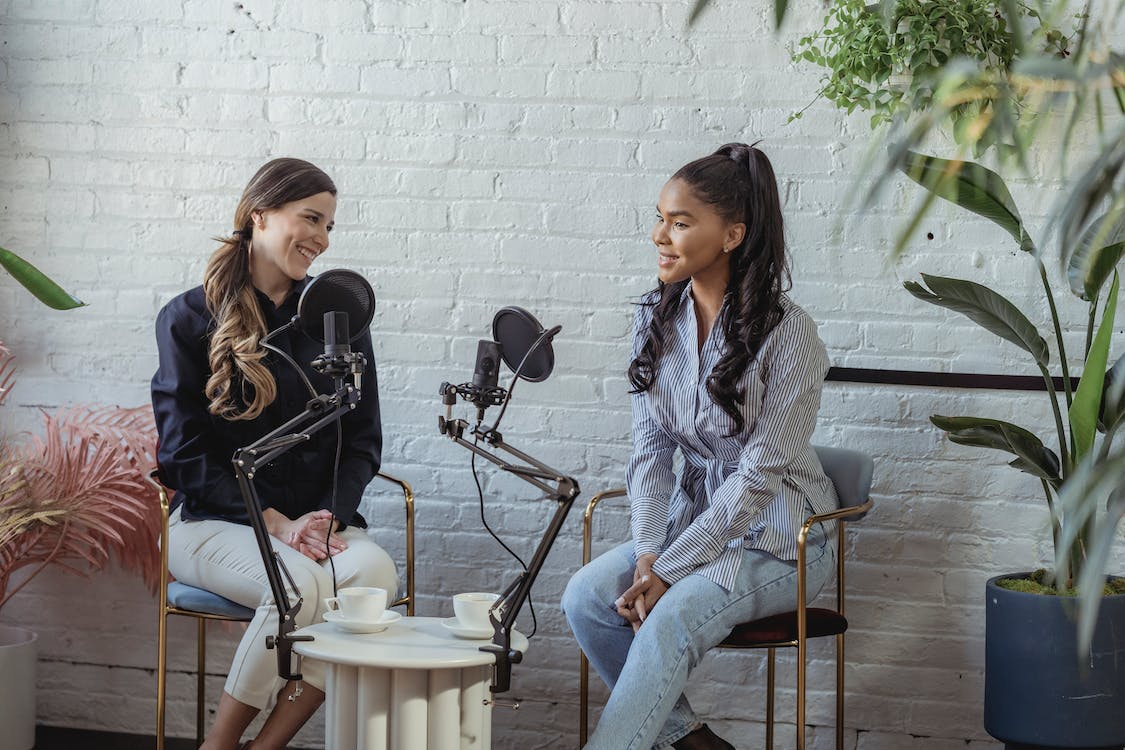
How to Transcribe Apple Podcasts in 2024
98% accurate, real-time transcription in just a few clicks. 58 languages and multiple platforms supported.
Are you having trouble finding legitimate ways online to transcribe Apple Podcasts? Well, you’ve landed on the right page.
Transcribing Apple Podcasts can be difficult because you don’t get an audio file when you download it from Apple. This can make it difficult for you to upload the mp3 to automatic transcription software.
Today, we’re going to show you exactly how to transcribe Apple Podcasts. We’ll also talk about how to maximize accuracy.
How to transcribe Apple Podcasts automatically?
Other sites might give you a tutorial on how to transcribe Apple Podcasts automatically, but they simply don’t work. They leave out important details on how to actually get the podcast file into the transcription software. Here's a way to automatically transcribe an Apple podcast that actually works.
Step 1: Go to the Apple Podcasts app and find the podcast you’d like to transcribe. Click ‘More’ (...) next to the episode you want to download, then click ‘Copy Link’.
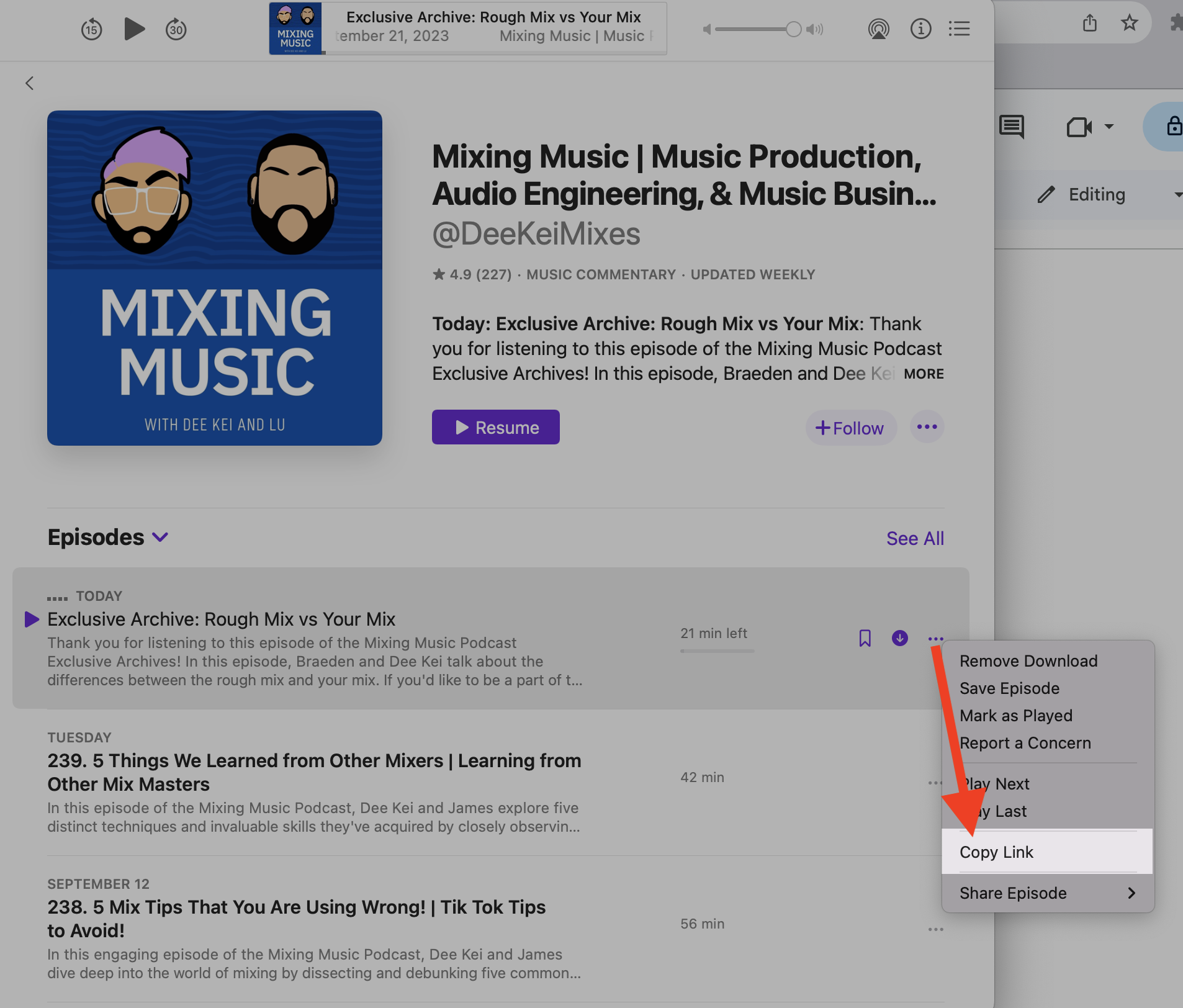
Step 2: On your web browser, go to Lychee.so and paste the link to the podcast. Click ‘OK’.
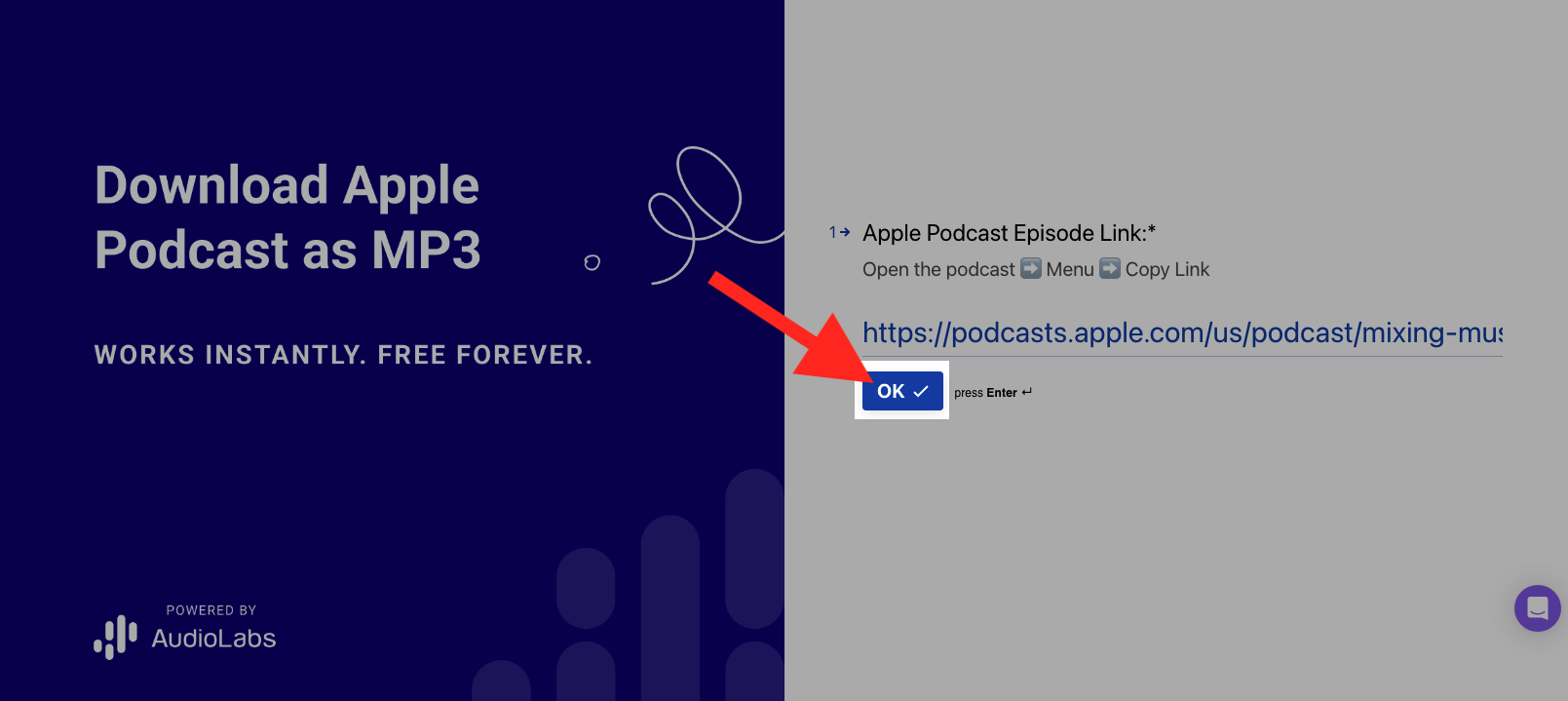
Step 3: Enter your email address and click ‘Submit’. You will get an email with a link to download the file.
Step 4: Log in to your Notta Dashboard and click ‘Import Files’.
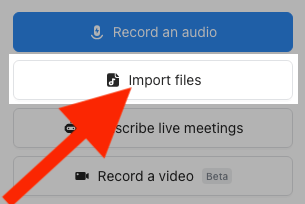
Step 5: Choose the language your podcast is in under “Transcription Language.” If there is more than one speaker, check the box for “Enable speaker identification.” Drag and drop the audio file, or click ‘Select Files’ and choose the file you just downloaded. Once it’s done uploading, close the window.
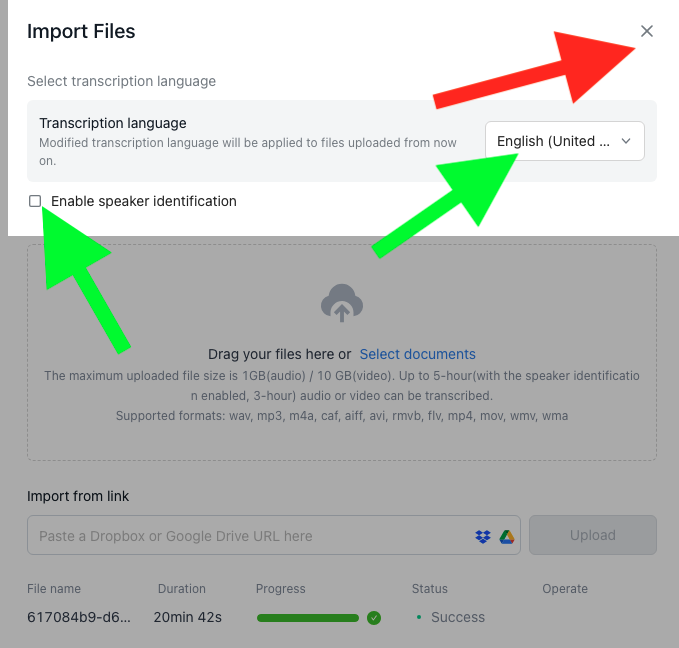
Step 6: Click on your transcript on your dashboard.
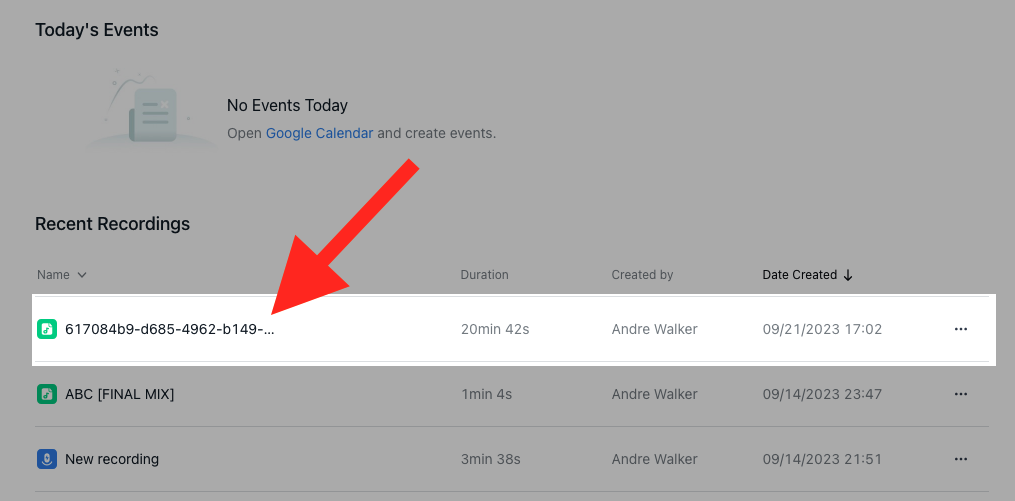
Notta can convert your spoken interviews and conversations into text with 98.86% accuracy in minutes. Focus on conversations, not manual note-taking.
How to make automatic transcription more accurate
If you’ve already recorded your podcast, some of these things may be invalid. If so, here are some tips you can use in the future:
Eliminate noise from the recording - Background noise can make it difficult for your transcription software’s natural language processing (NLP) algorithm. The more noise there is, the harder it is for the NLP to pick up sounds that make up words.
Use a dynamic microphone - There are different types of microphones for different applications. Some will work better on some voices than others as well. Dynamic microphones are the best choice for podcasts because they pick up sound directly in front of the speaker and not on the sides or behind it. This minimizes the chance it will pick up other sounds in the room.
Speak directly into the microphone - Try to make sure you’re at the same distance from the mic the whole time. The best distance is about three to five inches away from the mic.
Use a pop filter - Pop filters help reduce the harshness produced by sounds made by the letters “t,” “s,” “k,” “p,” etc. Using a pop filter prevents these sounds from distorting the recording and, ultimately, your transcription.
How to transcribe Apple Podcasts manually?
Transcribing a podcast manually can be very time-consuming. Some podcasts contain very complicated jargon or other speakers talking over each other. However, with some patience, it can be done. It’s best to use a computer for this.
Step 1: Open a Word document on your computer.
Step 2: Press play on the podcast.
Step 3: Type the words you hear. Every time a different speaker starts talking, add a new line. If there is only one speaker, add a double space after every four sentences or so.
Step 4: Don’t worry too much about mistakes the first time around. If the podcast gets too far ahead, pause it and catch up, then just keep going. After you’re done, play the podcast again.
Step 5: Add any words you may have missed and correct any grammar and spelling mistakes.
Step 6: Listen to it again one more time and add timestamps. Add the names of any speakers next to each timestamp. Make any corrections you might have missed on the first two listens.
How to make manual transcriptions more accurate
Not every podcast is scripted. If you’re starting completely from scratch, here are some tips to help you create manual transcripts as painlessly as possible.
Adjust playback speed - Try changing the playback speed to .75x or slower. This will give you more time to catch each word.
Ignore filler words on the first listen - Words such as “um” and “ah” can be ignored the first go around. Try to get the main ideas each speaker is talking about, then you can potentially add them in later.
Hire a professional - Some podcasts may be simply too long or too complex. By hiring a professional, you can save time and focus on creating content.
Use Notta's AI transcription tool to quickly and easily transcribe audio and videos. We guarantee accuracy and ease of use.
Why transcribe Apple Podcasts
You might be asking yourself why you’re going through all this trouble to transcribe a podcast. The truth is, there are so many benefits they go beyond the scope of this article. Here are just a few reasons why it's beneficial to transcribe an Apple Podcast.
SEO boost
Transcripts can create a huge surge in the effectiveness of your SEO. When people search for things online, they’re usually looking for an answer to a question or a solution to a problem. When they type certain keywords into a search engine, relevant keywords in your transcript will put you higher in their results. If you’re discussing something on your podcast they need help with, your podcast will show up in their search.
You can add the transcription in the show notes
Some people prefer to read along with a podcast while listening. This creates a more immersive experience for some users. Also, some users may be in an area where they can’t listen to audio, but they still want to enjoy your content. Having the transcript in the show notes allows them to read along while they wait for the jackhammer outside to stop.
Creating new content
You can also use transcripts for repurposing. If you like to chop up your podcast into bits you can use for social media, you already have captions ready. Also, you can create a dedicated section on your website for your listeners who only want to read. You can add fun facts, such as jokes about things going on in the background at certain timestamps.
They create searchable content
Some podcasts can be 3+ hours long. If you need to pull a quote from a guest you had on your show, it’s not always easy to find skimming through audio. With a transcript, you can just simply hit Control + F and find what you need. Then, you can find out the timestamp and skip to the part of the show you need to reference.
Summarizing
Sometimes podcasts are all over the place, especially if there are multiple speakers. With a transcript, you can have a bird’s eye view of the content that you discussed. Then, you can more easily give your audience a general idea of what went on during the show to put in your description. Using tools such as Notta’s AI Notes, you can generate a few paragraphs that highlight the key points of the show.
FAQs
Does Apple provide audio transcripts?
Yes, for select podcasts. If a podcast meets certain criteria determined by Apple to be eligible for transcription, they will include it with the show. They prioritize eligibility based on top podcasts created in English. Smaller shows, or shows in other languages, may take a while to get transcribed by Apple. Sometimes, it may be best to handle transcription yourself if you are a newer show.
Can you translate an Apple Podcast?
Yes, by using a tool called Notta, you can convert your podcast to text. Then, you can use Notta’s translate feature to translate the podcast into 58 languages.
How do listeners find podcasts?
These days, there a dozens of ways a listener can find out about a podcast. The most common way is by attention-grabbing headlines. But before you even see the headline, it’s recommended to you as a result of SEO (Search Engine Optimization).
Most podcast platforms, such as Apple and YouTube, use data from other content you consume to recommend new content. They will search the transcripts of content that has similar keywords to content you already watch. Then, you will eventually see it on your feed or recommended section.
How can I improve my podcast SEO?
The best way is to have a transcript, bottom line. If there are no words attached to the audio or video of your transcript, the search engines have no idea what it’s about. If the search algorithms can’t detect what your podcast is about, they can’t recommended to new listeners.
A transcript allows the algorithm to pick out keywords from your show. It then puts you higher in the search results for certain keywords people search for.
How to search podcast transcripts
If the transcript is in PDF or some other type of text document, you can use the search function in the document viewer. If you want to search the transcripts of podcasts on Apple, simply type any phrase into the search bar. Apple will search the transcript of all podcasts that have one and let you know if any podcasts discuss the phrase you enter.
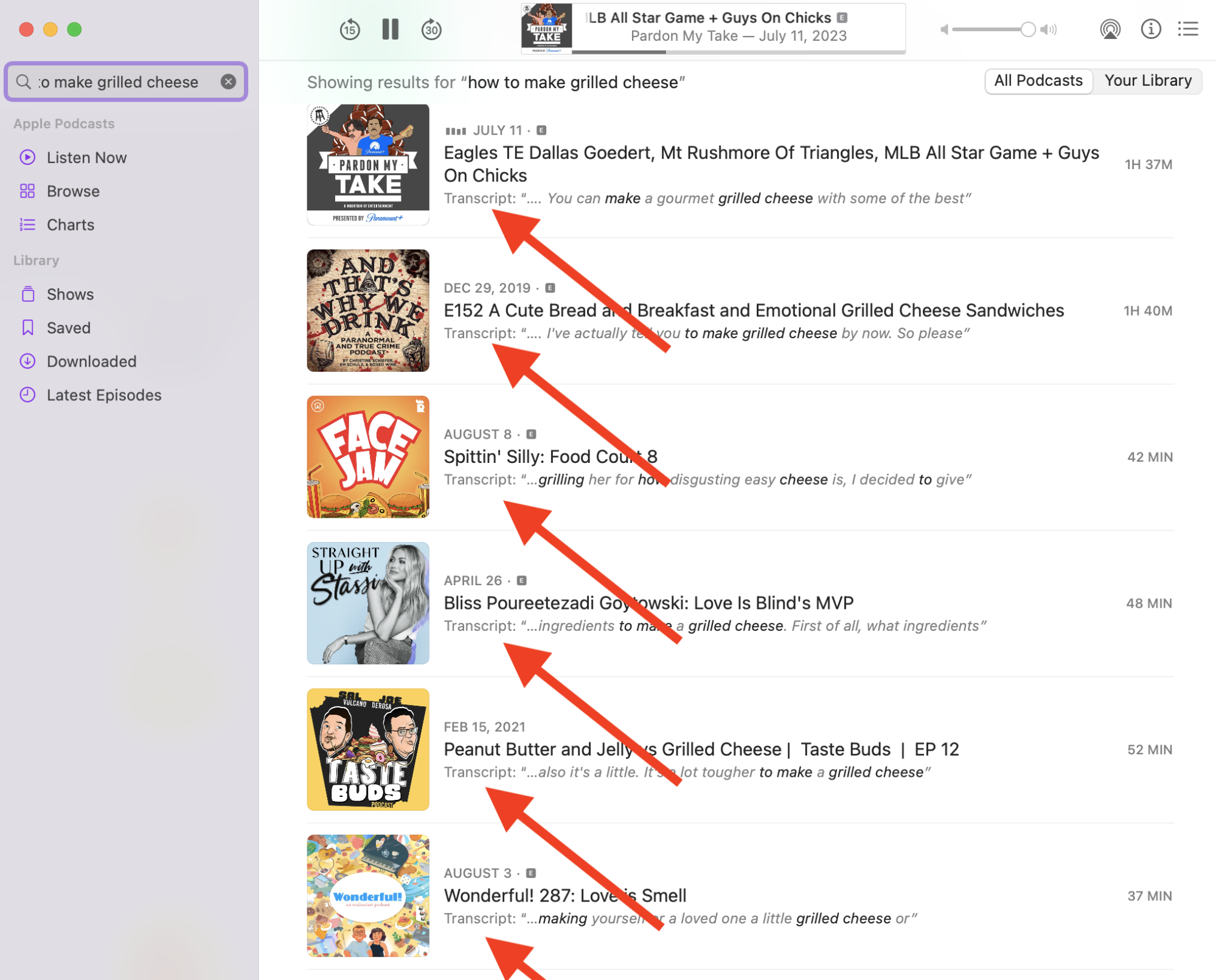
Final thoughts
As you can probably see, transcribing Apple podcasts is easier than you might have thought. Manual transcription is easier than it seems, but it just takes a bit of patience and listening skills. Not everyone has time for that, though.
The best bet is to go with automatic transcription with Notta. Then, you can use the AI-generated time stamps to go back and listen to any parts of the podcast for clarification. Sign up for your free Notta account today and increase your podcast’s reach.